rev., Sep 16/18, 2021.
with mention of Glaser’s broadsheets of celestial phenomena in Nuremberg; Jung’s Flying Saucers (1957, internet archive): The Empty Man (2021)..
Now the question is, how do I view other phenomena recorded, over time?
This requires creating a taxonomy of types of sightings, determining if any other demons are seen. Above, tracing out the phases of Glaser’s sighting, a kind of body tunnel was formed horizontally in the sky, but then the rising action in and around the sun, and then the condensation of it all to the black spearlike form, which Jung says is phallic, seemed to tilt to an emphasis on the vertical, and thus the formation of a figural, Xyston, the spear demon of Nuremberg.
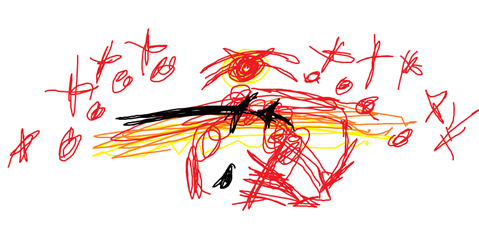
following from this, it would make sense that once that impression is imprint on the local mind, other events after might well be read as more of the same (the “It’s just like 9/11” syndrome continued in the NYC mindset in response to any accident or explosion for over a decade). This immediately brings into play the Knight in the Sky that people saw
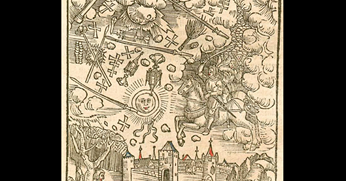
here is a later version from 1566
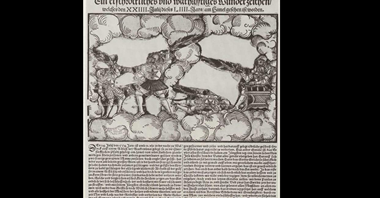
close up
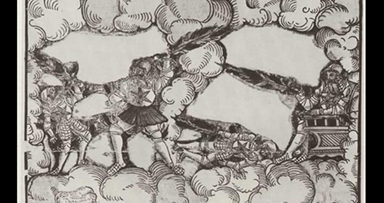
this shows two knights fighting on the left, a slain knight lying right, and then a king on a throne, holding the same black spear. The arrangement of figures is odd, a sure sign of a logic beneath it, out of which one is piecing together a pareidola. All of it is oddly framed in split screen cloudscape, which perhaps bespeaks by way of a le fanu eye projection the externalization of the eyes and something in them. The emphasis on the frame also suggests a half-lilfe override. The rest of the marginal turmoil is rendered in simplifying cloud.
But in the earlier one, we see one knight charging, and through the deadfall of all of the sundog effects zipping this way and that causing people to not only see crosses, behind the blood, resulting in blood crosses, but soon enough every object in the list of tortures in the Arma christi, sacred relics of persecution in the Passion. We can see chalices and the crown of thorns, the scourging pillar, the whip, the lance and sponges, it would seem the whole of the passion was falling from the sky onto them.
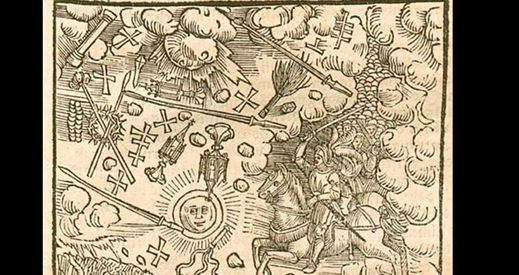
the arma christi became a significant source of cult items and imitatio christi cults at the time.
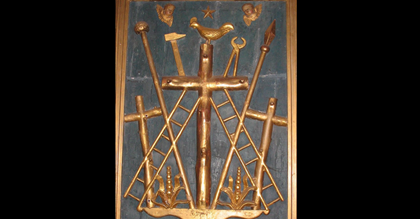
it usually happened that they were in art either separated to exist on their own as abstraction or in the letterspace of the symbolic vigilogogic state of fellow feeling empathic imitation of christ, or they floating overhead in scenes of the life of christ, as andactsbilder aid in meditation on them one by one, as if saying a rosary.
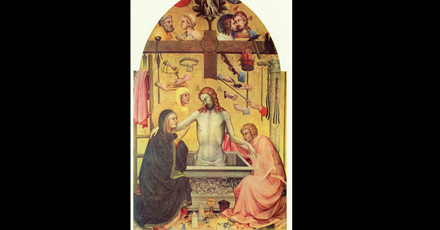
with such a graphic appeal that they were also incorporated into family coats of arms
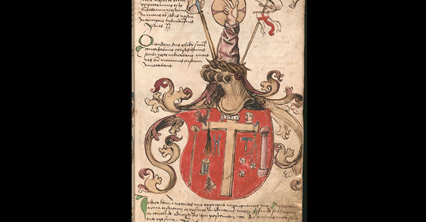
It could then be said that the eyes of the religious person at the time were as if cataracted over by a tendency, should anything odd show up in one’s eye, to see arma christi. This much then argues that it is culture that colored the nature of the eyesight. But then there is the extra dimension of media’s role in creating a general sense of what the sky is versus the ground, and how they relate. This one of various sun spots and halos that appeared over Vienna in the 1520s is entirely abstract, with the rain turned to cats and dogs, so to speak, and then the below part being just an emblematic representation of elements from the Noah and ark story. This simply indicates that in the construction of the milieu by media it worked out, as I have argued, that a picture with the drama of wonder in it in a broadsheet format that had to grab a viewers eye first with spectacle, and then they read all about it, the sky was the vigilogogic, and the ground with the hypnagogic. When you looked at the sky you were literally looking up through the very wobble-wobble of the in-between, or low sky luorosphere, just overhead, and since sky was associated with heaven, and earth with the here and now, and acheiropoetoi and other miracle images had a habit of dropping out of the sky, a binary crossover formula developed which prompted people to see the sky in entirely fictional, religious and figural fashion.
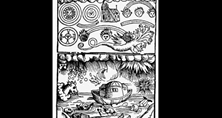
and then it follows that if ever there was a vertical turbulence, it did not take much to create of the arma christi in one’s mind a figure (as I did to create a Frankenstein in my novel Arma Christi), and thus sword and elements become a knight.
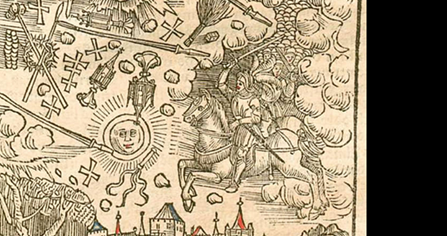
but there is another dimension here. This seems to be an apocalyptic scene, because the knight is charging in protection ahead of the saved, streaming apparently back down to earth. This is an important inherited visual trope. In Durer’s Apocalypse, there is a tendency to make heaven crowded, to convey the idea of a host, so here with St John (these homely wooden doors of heaven are the detail I most appreciated seen in Waetzoldt
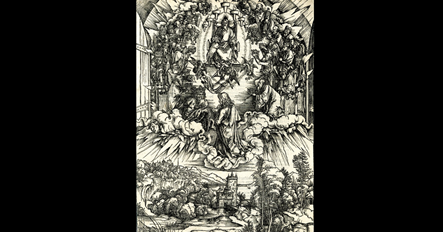
again, in the Adoration of the lamb
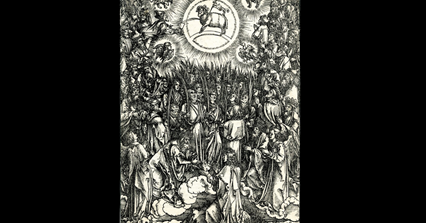
but in the whore of babylon
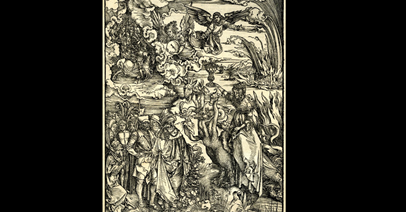
there is, in fact, the host, appearing en masse, and compressed in a crowd, in an almost medieval style, and they seem to ‘figure forth,’ that is, as pareidola, from a vertical opening in the clouds
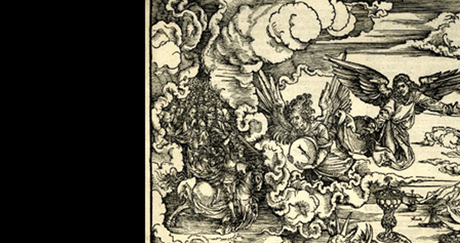
this means, according to my graphs, that Durer’s vision, and the vision of the sky as derived no doubt from his influence, it was, as said, the “sky” above the in-between, and the symbolic earth, as if in a nexus reflecting the things of the earth; but it was also topped off by a fata morgana, which the small figures en masse are a mere pareidola of the clouds, and thus have an inherent vertical push.
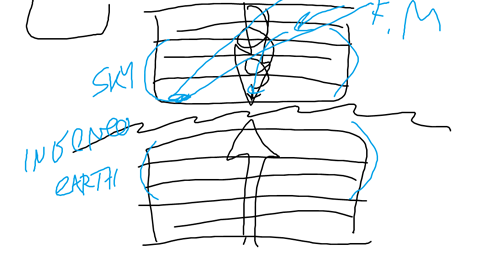
then when that downward figural impulse touched the central core of consciousness and its turbulence approaching a nexus at the borderline, it took on a vertical, singular figural form, a knight. Thus, one has developed a core sun space, all the turbulence around it resulting in abstract forms, not unlike its raining buckets or cats and dogs; and then there was a cul de sac where a more figural cloud-based fata morgana formed, to give a forward downward thrust to the sighting, maybe to make you duck.
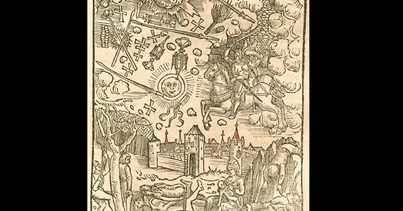
This then left those seeking to render the appearances with two choices, cover the arma christ rain, which goes beyong the blood rain crosses
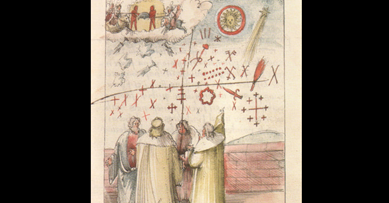
but then up in the corner in the high sky you get a glimpse into an imagined heaven and there, here, there is a battle of knights, here staged as a battle of demons, or fallen angels. This one also includes similar calendar-oriented sun and star imagery, which has biblical import too. Then, to progress with the evolutions, if you saw the sun illuminate oddly, that could be presented vertically, giving, half way between bookread figurals and weather events, a vertical presence, almost monstrous
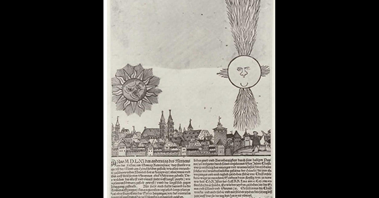
and such vertical readings of them, impellations, if you will, can take on a religious significance to alsto construe where and now as the gateway to an out there
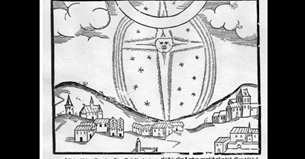
as long as the suspect vector, as well as the fear vector, were switched to ON, there is a tendency of the frightened mind to, upon report of any disturbance, to bounce to the worst case scenario, and then step back, fearing that it is coming in on you, targeted. Presuming, for the moment, that in 1566 Glaser had a nightmare the night before, or even just before that predawn hour, the witching hour, he would then “wake up” to a second dream which he nonetheless thinks, while walking it, he is awake, and there in searching for meaning he will detect that whatever it was that was keeping his sense of safety intact, in terms of personal and community space, and lebensraum, that theory, he would then sense that the vectors have pulled in from presence to Figment, figments were forming, he then encounters TIND-TIRH, who now spins down through the figments, then back up by way of the fata morgana to come down upon him like a demon occupying and figuring out the horror of the falling into nightmare, a demon like this
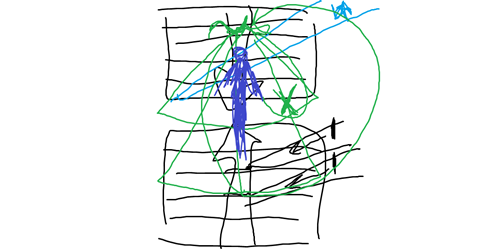
in other words, there might, somewhere in these dynamics (my formulation here is less than optimal), be the construal of megafigures, which haunted, then, the imagination of people living in Nuremberg at the time.
it is interesting then that when Jung addresses two of these pictures
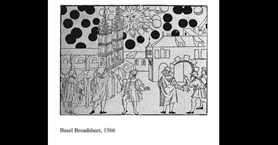
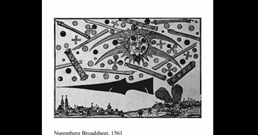
he sees mother-ships, and then alchemical symbols, he argues that the Christian reading of the cross is a nonstarter because this is a natural event, and that as such the crosses represent a more primal meaning as combining opposites, all elements of the vertical and horizontal uniting to form a quaternion. This is the marriage symbol, he says, then all the UFOs are actually amassing together to celebrate the marriage flight, and that the dawn hour only intensifies the honeymoon feeling by offering up the aurora consurgens, the revelation of the light, an idea from Boehme. Interesting.
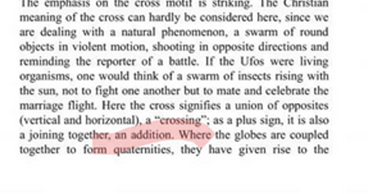
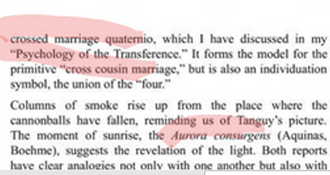
but, then, this follows from his previous interpretation of two other works of art included in the text. The Fire Sower, oddly, is a vertical figure seen as if walking over earth
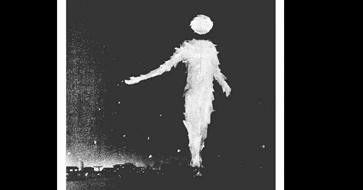
he argues that because it strolls by the city, and the city seems to not be affected, this is the fire of the philosophers, descending from heaven
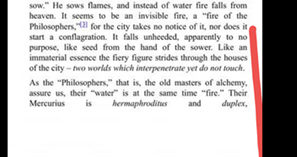
for that reason, the city is in one reality, the fire sower in the other, and, as such, he IS the symbolic figure representing the crossing over of two worlds that do not touch. In that capacity he is aforementiond Mercurius Katachthonios, a hermaphroditic demon that rises up from the earth in the form of fire,
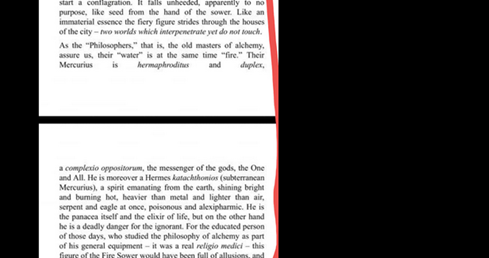
in other words, he is homo maximus, the full human being fulfilled as self living in dream, as compared with the paltry ego that scuttles about in this world.
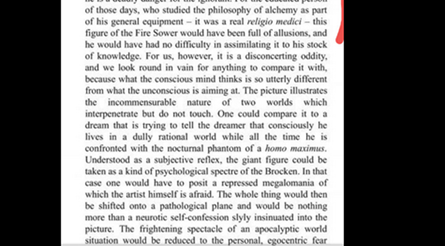
he quotes Revelations, he is the fiery minister,
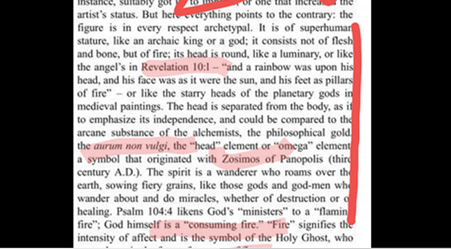
the unconscous strolling by the conscious, the same figure is quoted in Durer, the figure of the unconscious that makes your rational mind eat the book, because it is such a shortcoming, compared to the real dream of it (and this, then, again, the minister as if of the arma christi built up).
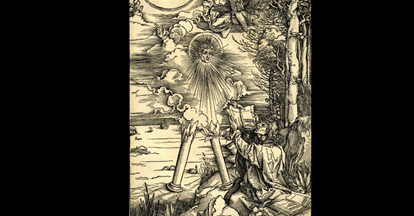
for Jung, then, he is also the in-between figure. In his mental world, a work of art had a conscious surface, and then an unconscious depth. This figure represents the unconscious depth surfacing, for a moment, this homo maximus, or Anthropos, the filius hominus, Lucifer, the holy ghost.
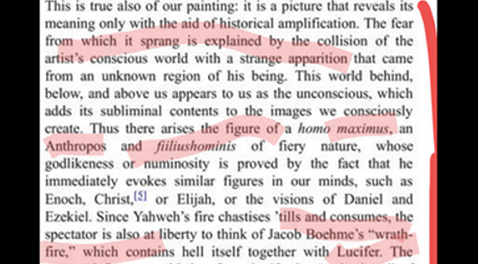
This echoes on a recent viewing of The Empty Man (2021), where James goes out to the camp, and then sees a group of cultists circling a fire, that is getting higher as they do
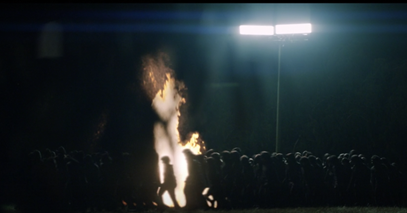
then, by their energy, it rises higher still, with a hint of figuration
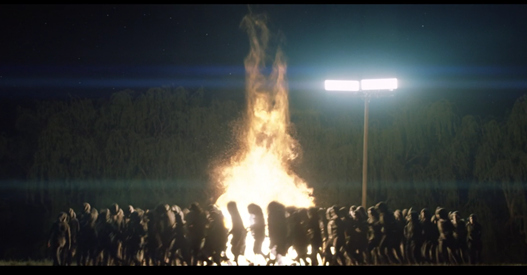
then we see it shoot up, high
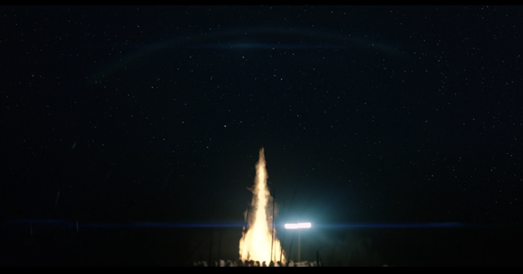
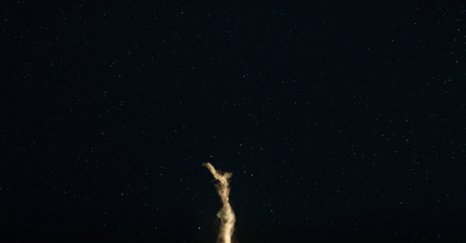
and, by this, James, standing across the river, has a dizzy spell, which opens up to the milky way
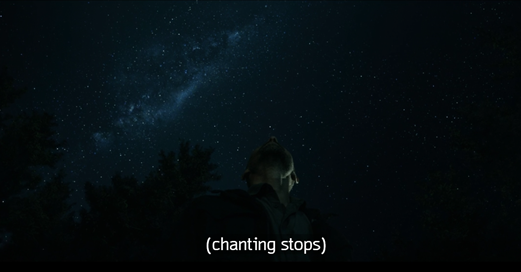
and when he sees it, he spins
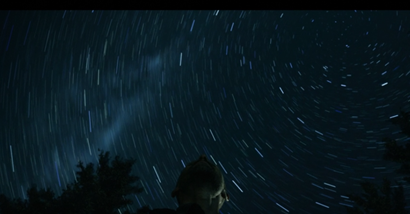
which strangely relates, by triangulation, with the image on the front page of the NYT announcing the end of the war of Afghanistan, copying Elsheimer’s famous painting, the first painting on earth to show the Milky Way, and said by some to be an omen of bad times coming.
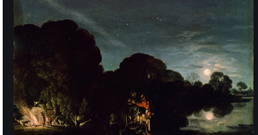
and, then, right at that moment, the chanting stops, the fire goes out, it is dark
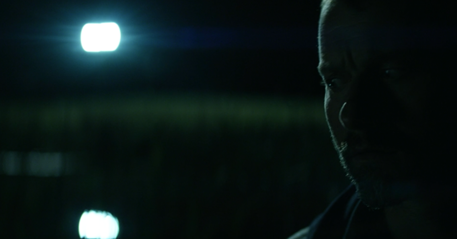
and very quickly this mere Presence, on his conjure vector, remains off in the distance, but where they are going is concerning
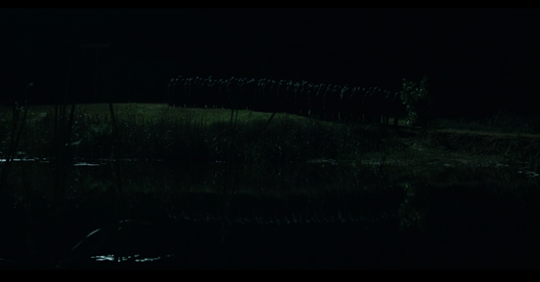
then they get to just across the stream from him, all stop, and seem to him to look in his direction, the ultimate scare as the vector contracts to the Famulus position, you realize you are the target
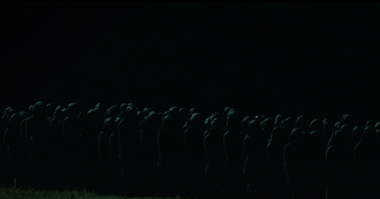
then they get to just across the stream from him, all stop, and seem to him to look in his direction, the ultimate scare as the vector contracts to the Famulus position, you realize you are the target, and they chase him, back over the bridge
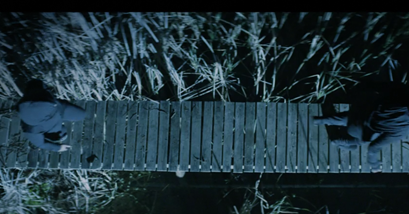
all the way to his car, and all the time he is thinking, what the fuck is this?
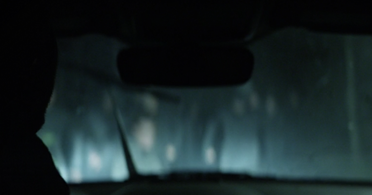
like I said

what it was was a large fire figure, not that different from the one in The Fire Sower, and when they got it to form into a high as if twister that reached up into the sky, to bring down the spirit transmitted there, it then by way of the Milky Way conjured James to it, he felt the spin, they felt that someone nearby felt the spin, that must be the new mediator, so, conjuring done, they go get him. In other words, while from Jung’s perspective the Fire Sower is ambiguous, here, not so much.
I ought to here to pause to explain where Jung’s psychogeography is located vis a vis mine. His view of the world of the mind is yet a modernist frustum. It foreshortens mental life into a battle between the conscious-rational and the unconscious-irrational, as such, in the frustrum, his mind acts upon the rings of saturn, and vacates as a no man’s land the whole in-between zone, which in his topology is ALL of the realm of the vigilogogic and hypnagogic that I spend so much time working out, all of it occult. As a result of this split his conclusions are highly polarized, and, on the positive side, prematurely reassuring with its psychic optimism that one can see such beings as the homo maximus in one’s REM (only) dreams, or in the realm of the occult, parallel to REM but vaguely placed as a counterpart to the conscious, but apart from REM, the unconscious. In recent colonizing and inhabitation of the various byways of the in-between, as I work it out in examples from movies, the unconscious comes into direct contact with the conscious mind far less often than Jung imagined. Which is why so many of his readings seem far-fetched and overly figured out. Indeed, it seems very unlikely, that this figure, the Fire Sower
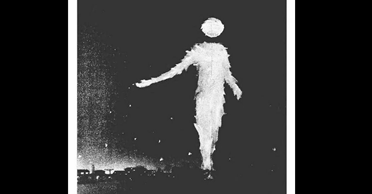
would be seen by most people in an entirely positive way. Similar figures that have appeared in horror like it certainly do not emit such a positive vibe. I immediately associated this figure with the scary grasshopper demon that towers over Hobbs Lane in Quatermass and the Pit (1966), a destructive force (I will further explore this when I read the Midwich Cuckoos and compare to Jung’s also rather benign reading).
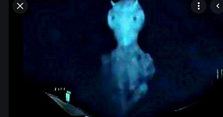
this image, most closely parallels the demon of Hobbs lane
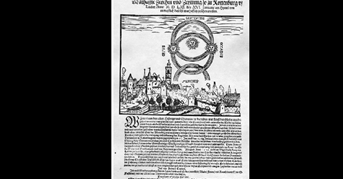
this image underscores and informs even more the sighting of positive imagery in the third painting Jung “critiques” using alchemical symbolic theory symbols, The Fourth Dimension
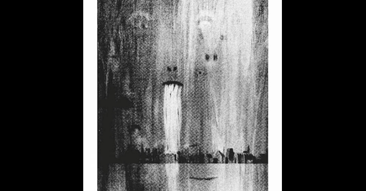
in this one, he counts up the circles and squares hovering about, and decides that the fourth dimension is what is represented in the background
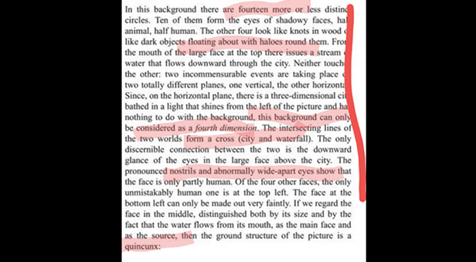
again, he splits the canvas between the city, in conscious life, on the right, and, then, the hauntings, in the left, the unconscious, or the fourth dimension. He sees a cross and a waterfall, in midcanvas, separating the two worlds. Then, he all but describes a kind of symbolic cymbal-clanging similar to the one Glaser saw on April 14, 1566 over Nuremberg, but he counts numbers, believing that number is the entity that allows the crossing over, and that the main figure is the embodiment of all this
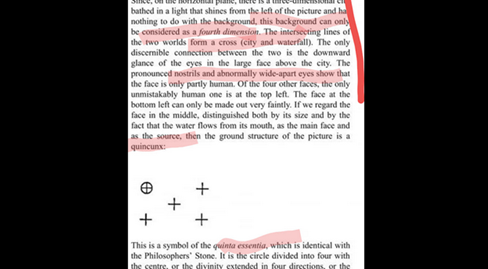
he then zeroes in on the central face, and sees it as the key element, resulting from the presence of which the “ground structure” of the painting is the quincux, the quinta essentia, quinessence
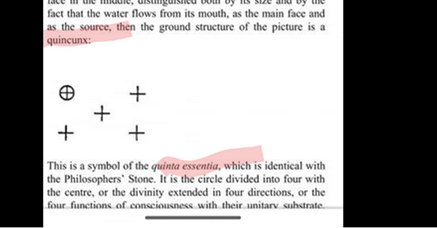
this is very good, and I wish, but in my reading, my keep of the concept of the quintessence, is based on Dixon’s analysis of Bosch’s Passion, christ the face of quintessence, amidst a world of men drunk in overkill of the various humors, mad with as if humor poisoning (reinforced by Veronica, a blue boy construct)
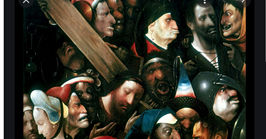
but I made a point of it again
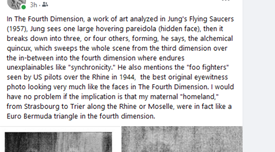
In The Fourth Dimension, a work of art analyzed in Jung’s Flying Saucers (1957), Jung sees one large hovering pareidola (hidden face), then it breaks down into three, or four others, forming, he says, the alchemical quincux, which sweeps the whole scene from the third dimension over the in-between into the fourth dimension where endures unexplainables like “synchronicity.” He also mentions the “foo fighters” seen by US pilots over the Rhine in 1944, the best original eyewitness photo looking very much like the faces in The Fourth Dimension. I would have no problem if the implication is that my maternal “homeland,” from Strasbourg to Trier along the Rhine or Moselle, were in fact like a Euro Bermuda triangle in the fourth dimension.
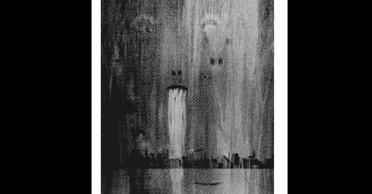
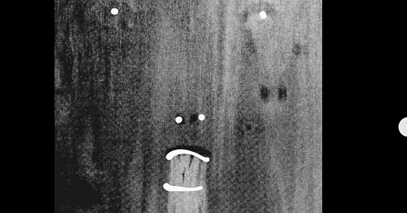
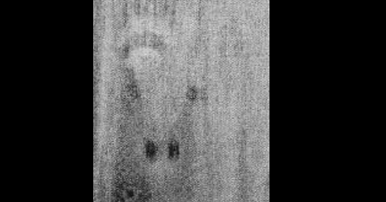
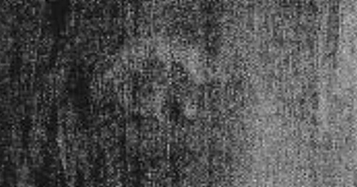
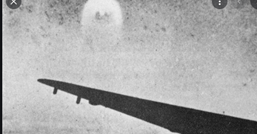
and it strikes me that these faces are part and parcel of the haunting face in a classic OEP, original eyewitness photography, the face of the foo fighter seen by US pilots over Germany in 1944. And whilst it could be argued that they were seen as if in repentance of the horror they had to inflict to bring Germany to its knees, the notion that there is a Bermuda triangle in around Hartog and Ouijan etc, is fun. But, seen at proper scale of sleep stages as they impact the mapping out of mind, this is a nightmare demon rising almost like a Death Mask over a city, that is, a close cousin to the one I saw in Glaser’s 1566 study, this is FOO, cousin to XYSTON.
He, however, goes on to see a kind of god, a being come up from the “unitary substrate” with four faces, only one of which is human, like seen on Ezekiel’s wheel
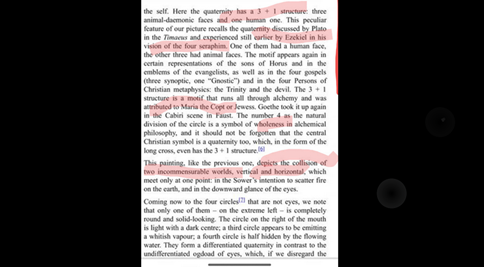
Jung finally calls him the refrigerium, the cooling being who finally puts out the fire,
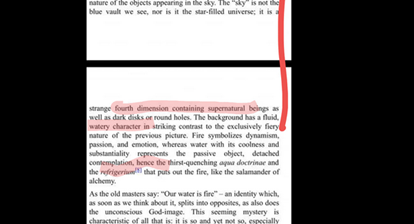
he also brings in Hildegard of Bingen, but that is outside this purview.
In any case, Jung reinforces the seeing of mostly a figurative element in the events in the sky over Nuremberg. But, to continue in the taxonomy. It appears that when the vector switched to OFF, and culture was becoming more ‘rational,” in an interregunum before it went back again during the Thirty Years war, astronomical realism begins to replace, say, astrological supernaturalism. There follows, this from a meteoros site, simply pictures of what the rationalizers latch onto as proof of the science of it, various forms of halos.
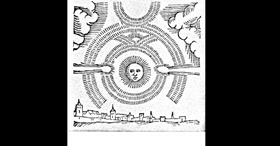

as part of the corpus there is also the emergence of another subgenre, the three suns. I have not seen these before, but they bespeak at least the notion, still extant in internet culture, that astronomical events figure significantly on earth. The truly strange thing here is that in my formulation of the roving form of the second dream in the Eldritch formation in a state of syngogy, and when searching one finds a “thrin” of objects, or three of them, which I call Orion’s belt, the impellation par excellence, consisting of the sweet spot of the dreaming mind. It may then be that these, when further explored, are, in the text, given a more visionary prophetic meaning, to be continued.
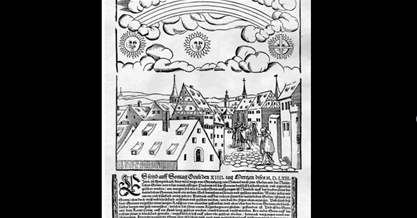
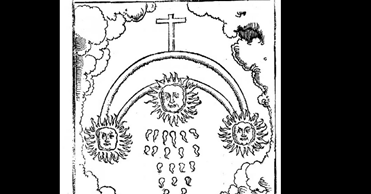
and then the more science that was fed in, the more graphics from the scientific literature, where the answer as to what these are lies, overcast the sightings, and these feel like gates to me, portals, of possible escapist significance.
Then, these, they say, are the aurora borealis, seen, apparently, over Nuremberg, in the years leading up to the Thirty Years War, at present, in my view, inconclusive.
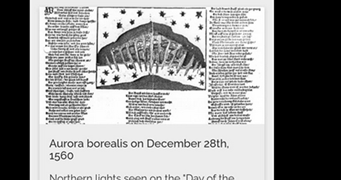
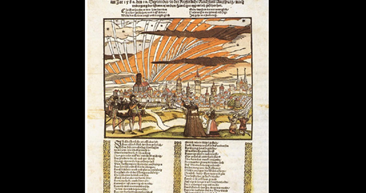
though it may be that when the fear or suspect vectors switched back to ON, tensions building, these sightings began again to have a more ominous quality
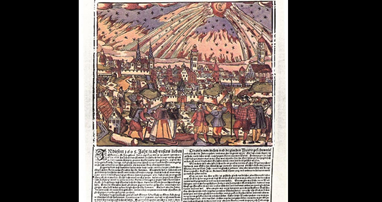
and it may be, in this one, that things circled back to seeing a battle anew in the aurora borealis, if that is what this is.
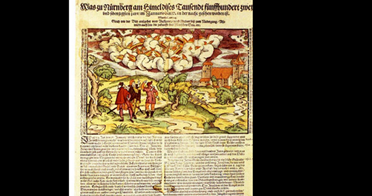
Finally, to address some of the pecularities of Durer, which suggests his buy-in to this popular broadsheet visual tradition or corpus. There is no question that Durer’s Apocalypse is part of this popular tradition,
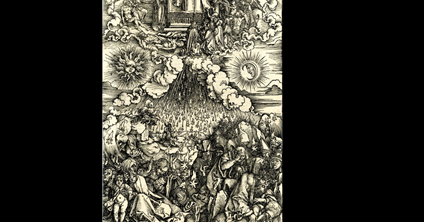
here, the sun and moon, and the rain of…..in this case, fire, shooting stars,
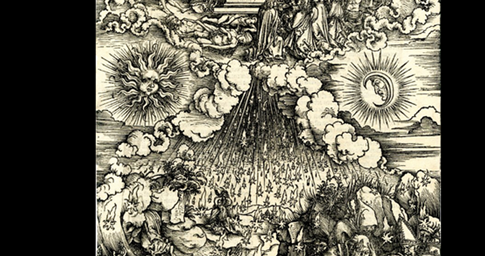
which crossover from heavenly logic, into life, to persecute, hit people
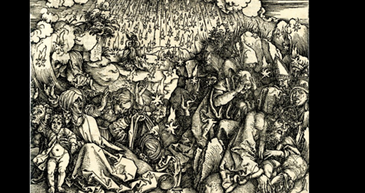
and in the culturing of trying to figure out what they mean I saw in Waetzoldt, likely because of the inosculatory effect of holding up over my chest a flaking crumbling book with a dried out binding, diving in, I saw that in one of the Apocalypse series, the gate of heaven is nothing more than a wooden shutter opening on the life below
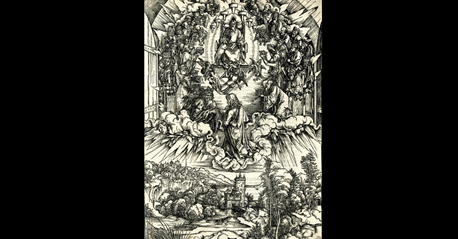
as such
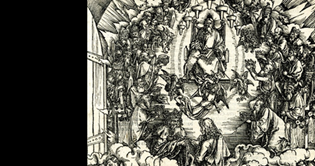
this further reinforces the notion that, as mapped out in my graphs, fata morgana lies above, in ambient space, the deadfall, Raven’s Gate, place of sacrifice, peripteral phantom wall, and the overall periaequductal reduction of materiality in ambient haunted worlds, altogether, when on the sideline of hypnagogy, the half-life TALUS structures
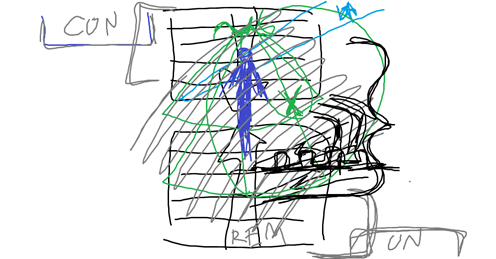
that even Durer knew of such half-life places in the imagination of mankind, all mental spaces that Jung seems (in Flying Saucers–in a 1903 paper on the psychology of the occult he did adress hypnagogic states) to be blind to, inside the modernist formalist frustum.
The End.